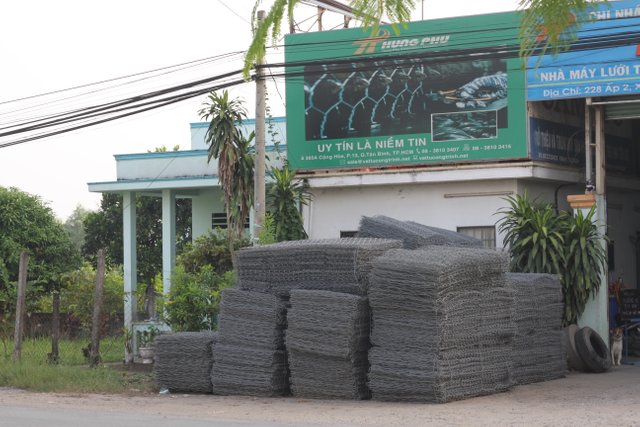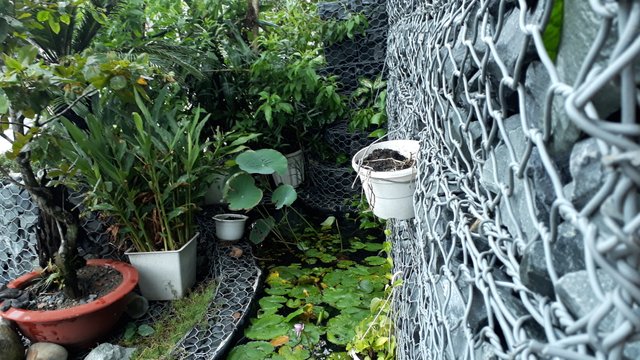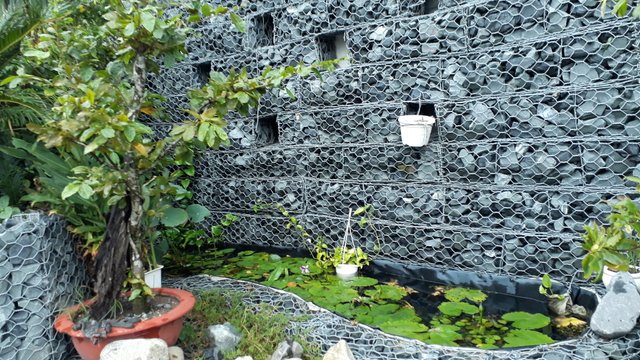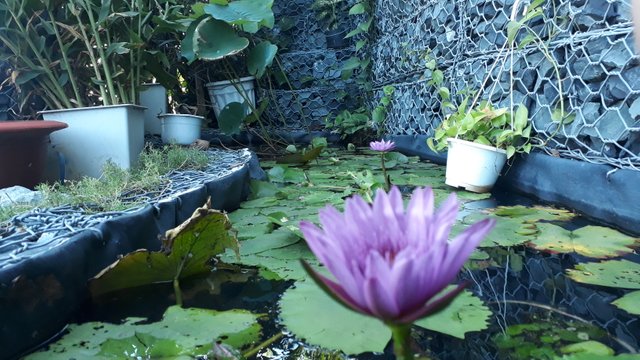Gabion basket
A gabion wall is a retaining wall made of stacked stone-filled gabions tied together with wire. Gabion walls are usually battered (angled back towards the slope), or stepped back with the slope, rather than stacked vertically.

The life expectancy of gabions depends on the lifespan of the wire, not on the contents of the basket. The structure will fail when the wire fails. Galvanized steel wire is most common, but PVC-coated and stainless steel wire are also used. PVC-coated galvanized gabions have been estimated to survive for 60 years.Some gabion manufacturers guarantee a structural consistency of 50 years.

In the United States, gabion use within streams first began with projects completed from 1957 to 1965 on North River, Virginia and Zealand River, New Hampshire. More than 150 grade-control structures, bank revetments and channel deflectors were constructed on the two U.S.

Forest Service sites. Eventually, a large portion of the in-stream structures failed due to undermining and lack of structural integrity of the baskets. In particular, corrosion and abrasion of wires by bedload movement compromised the structures, which then sagged and collapsed into the channels. Other gabions were toppled into channels as trees grew and enlarged on top of gabion revetments, leveraging them toward the river channels.